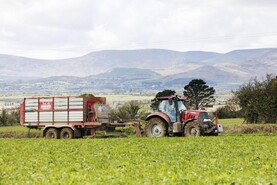The last few years have revolutionised our attitude to slurry. There have been a number of changes that have brought it centre stage.
First, the combination of a dramatic increase in fertiliser prices has led to a new appreciation of the basic nutrient value of slurry.
Second, the nitrates issue has brought the amount of organic nitrogen produced on livestock farms to the forefront and has forced all livestock farmers to be aware of roughly how much organic nitrogen they are producing.
For those producing well below the 170kg/ha, I suspect they do a quick piece of mental arithmetic and if that confirms their basic view that they have nothing to worry about as regards to statutory limits, they promptly forget about the subject and carry on farming as normal.
For those near or above the 170kg/ha N level, basic decisions have to be made as to whether to use the derogation at present reduced to 220kg/ha N, or consider either reducing stock numbers or exporting slurry.
The third issue that is bearing on the slurry narrative is the development of the spreading technology and the greater understanding of when and how its nutrients are best used.
All of these issues were combined in an excellent short series of talks and demonstrations at the Kepak farm near Fairyhouse Racecourse in Co Meath last week.
hat was the first time I had seen an umbilical system used to apply slurry to a growing tillage crop; a highly effective method for maximising slurry utilisation.
The winter wheat was sown on heavy clay Meath land, but with the wide tyres on the four-wheel-drive tractor and with no heavy slurry tanker to cause damaging compaction, the tracks were barely visible and certainly the young wheat plants in the tyre tracks looked as if they would be upright again within a day or two – despite all the rain we have had this winter.
The receiving farmer pays for the transport and spreading but the slurry is supplied free
From a practical point, there was a general agreement that a simple and comparatively cheap hydrometer gave a good indication of the nutrient status of a well-agitated slurry sample.
With accommodation for 1,500 cattle on the roughly 750ac tillage farm, the farm finishes about 5,000 cattle a year and, to stay within the 170kg limit, exports about two-thirds of its slurry mainly to nearby tillage farms.
In this case, the receiving farmer pays for the transport and spreading but the slurry is supplied free.
Strengths
Not surprisingly with a farm of this size and visibility, all the regulations are scrupulously observed but the basic strengths of the various aspects of the system were very clear and will serve as a useful template as we face into increasing scrutiny around our slurry management and as grants for slurry storage come more centre stage.






 This is a subscriber-only article
This is a subscriber-only article









SHARING OPTIONS: